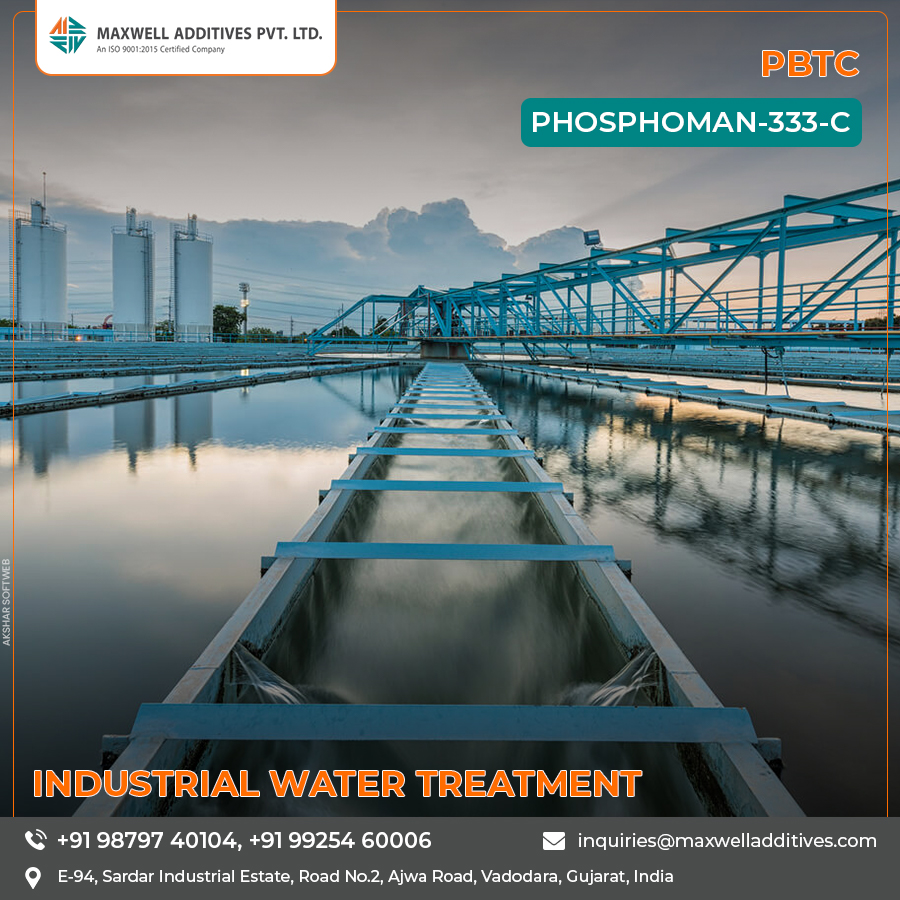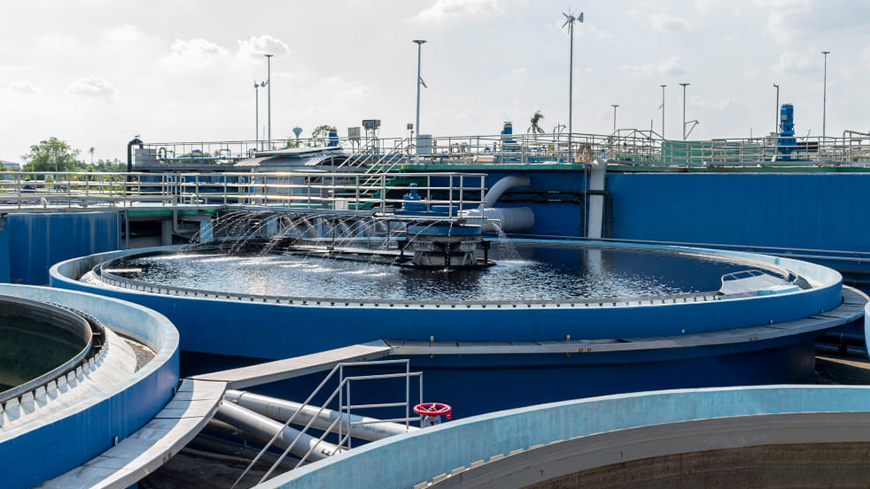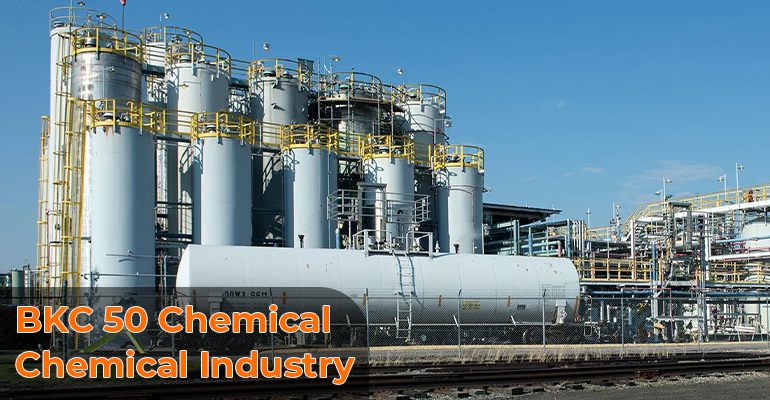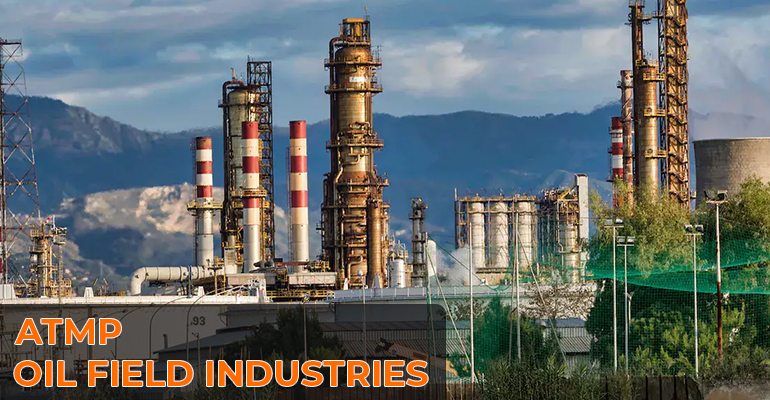ATMP is a versatile water treatment chemical widely used across industries for scale control,…
Certified PBTC Manufacturer – Supplying Global Water Treatment Industries

As a trusted PBTC manufacturer, we provide PBTC Chemical (2-Phosphonobutane-1,2,4-Tricarboxylic Acid), an effective scale and corrosion inhibitor widely used in water treatment applications. It offers remarkable thermal stability and works well with oxidizing biocides, making it a reliable choice for advanced water management systems.
PBTC Manufacturing Process at Maxwell Additives
The process of making 2-Phosphonobutane-1,2,4-Tricarboxylic Acid – PBTC is done with great care to ensure top quality, especially for industrial use. At Maxwell Additives Pvt. Ltd., we are experts in producing PBTC – 2-Phosphonobutane-1,2,4-Tricarboxylic Acid with high purity and accuracy. The process starts by mixing maleic acid with phosphorus-based chemicals at the right temperature and pH levels. This mixture is then filtered and cleaned to make a strong and effective PBTC chemical. Our PBTC is commonly used in water treatment systems because it handles heat well, works in hard water, and does not break down easily. As a trusted PBTC manufacturer, Maxwell Additives always makes sure each batch meets high quality standards while keeping the process environmentally friendly. Our focus on quality and innovation makes us a dependable choice for industries needing strong protection against scale and corrosion.
Specification:
| Items | Index |
|---|---|
| Appearance | Clear, colorless |
| Active acid % | 50.0-51.0 |
| Phosphorous acid(as PO33-)% | 0.5 max |
| Phosphoric acid(as PO43-)% | 0.2 max |
| Density (20 °C) g/cm3 | 1.27 min |
| pH(1% water solution) | 1.5~2.0 |
| Fe ppm | 10.0 max |
| Chloride ppm | 10.0 max |
Benefits of 2-Phosphonobutane-1,2,4-Tricarboxylic Acid – PBTC
1. High Thermal Stability
PBTC – 2-Phosphonobutane-1,2,4-Tricarboxylic Acid is known for its excellent thermal stability, which makes it highly effective in high-temperature environments like boilers and industrial cooling systems. Unlike many traditional scale inhibitors, PBTC maintains its chemical structure under heat stress, ensuring long-lasting performance. This stability reduces chemical degradation, improves efficiency, and lowers maintenance costs, making it a preferred solution for thermal water treatment applications.
2. Excellent Calcium Tolerance
One of the standout features of PBTC Chemical is its strong calcium tolerance. In hard water systems, calcium can form scale deposits that reduce equipment efficiency. PBTC binds with calcium ions, preventing them from crystallizing into scale. This action keeps pipelines, heat exchangers, and water systems clean and efficient. Its performance in high-calcium environments makes it ideal for industries where water hardness is a challenge.
3. Strong Corrosion Inhibition
PBTC – 2-Phosphonobutane-1,2,4-Tricarboxylic Acid offers excellent corrosion protection for metal surfaces such as steel, copper, and iron used in water systems. It forms a stable protective layer that prevents oxidation and rust, even under extreme pH or temperature conditions. This helps extend the lifespan of industrial equipment, reduces downtime, and minimizes the need for costly repairs, making PBTC a highly economical corrosion inhibitor.
4. Hydrolysis Resistance
PBTC is highly resistant to hydrolysis, meaning it does not break down easily in water, whether the pH is low or high. This stability ensures consistent performance over long periods, even in systems with fluctuating chemical conditions. Its hydrolysis resistance helps maintain the chemical balance in water treatment operations, allowing for reduced chemical consumption and more reliable treatment outcomes in various industrial and municipal systems.
5. Environmentally Friendly
As industries move toward greener practices, PBTC Chemical stands out for its environmental safety. It is biodegradable and does not release harmful byproducts into water systems. Unlike traditional phosphonates, PBTC offers strong performance with a lower ecological footprint. Its use helps industries meet environmental regulations while maintaining effective water treatment, making it the preferred choice for eco-conscious operations in power plants, HVAC systems, and water recycling facilities.
Explore Industries That Use PBTC Chemical
1. Oil & Gas Industry
In the oil and gas industry, PBTC Chemical is added to drilling fluids to stop scale and rust from forming inside pipes and equipment. It works well even in high heat and pressure. PBTC helps keep the oil flowing smoothly and protects the metal parts used in drilling and production, making the whole process more efficient and safer.
2. Textile Industry
The textile industry uses PBTC – 2-Phosphonobutane-1,2,4-Tricarboxylic Acid during the fabric dyeing process. It helps prevent metal ions from affecting the color of the fabric. PBTC improves how well the dye sticks to the cloth and stops discoloration. Because it works well with other textile chemicals, it helps maintain bright colors and smooth production.
3. Detergent and Cleaning Product Manufacturing
In cleaning products, PBTC Chemical is used to improve how well detergents clean. It controls minerals like calcium and magnesium in hard water, which helps avoid white spots or residue. PBTC also mixes well with other ingredients and is safe for the environment. This makes it a great choice for strong and effective cleaners used at home or in industries.
4. Pulp & Paper Industry
In the paper industry, PBTC helps stop scale and dirt from building up in machines. It keeps boilers and other equipment clean and working well during the paper-making process. This means fewer breakdowns and better-quality paper. Because PBTC can handle heat, it’s great for use in hot processing areas where paper is made.
5. Food & Beverage Processing Industry
In food and drink factories, PBTC is used to clean equipment like pipes and heat exchangers. It stops scale and rust from forming, helping keep everything clean and safe. Even though PBTC is not added to food, it plays a key role in keeping machines running smoothly, which helps maintain hygiene and quality in food production.
 Why PBTC is Widely Used in Water Treatment
Why PBTC is Widely Used in Water Treatment
2-Phosphonobutane-1,2,4-Tricarboxylic Acid – PBTC is widely used in water treatment due to its excellent scale inhibition, corrosion control, and stability properties. It is especially effective in preventing the formation of calcium carbonate, calcium sulfate, and barium sulfate scales, even at high temperatures and alkaline conditions. PBTC’s unique structure provides strong chelation of metal ions and exceptional resistance to hydrolysis, making it more stable than many traditional phosphonates.
In industrial cooling systems, reverse osmosis units, and boiler water treatment, PBTC – 2-Phosphonobutane-1,2,4-Tricarboxylic Acid is preferred for its low toxicity and biodegradability, offering an environmentally friendly solution. It also works well in combination with other water treatment agents like zinc salts, polyacrylates, and phosphates to enhance overall performance. Its superior threshold inhibition and compatibility with chlorine-based biocides make PBTC a reliable and versatile additive, ensuring long-term protection of water systems and improved operational efficiency.
How PBTC Works in Industrial Water Treatment – Key Points
1) Scale Inhibition
2-Phosphonobutane 1,2,4-tricarboxylic acid (PBTC) prevents the formation of hard scales like calcium carbonate and calcium sulfate by disrupting crystal growth and keeping salts dissolved in water.
2) Corrosion Control
It protects metal surfaces by forming a stable film, reducing corrosion of pipes, heat exchangers, and system components.
3) Metal Ion Chelation
PBTC Chemical binds with metal ions such as calcium, magnesium, and iron, preventing their precipitation and keeping them in a soluble form.
4) High Temperature & Alkaline Stability
2-Phosphonobutane-1,2,4-Tricarboxylic Acid – PBTC remains stable and effective in high-temperature and high-pH environments, making it suitable for boilers and cooling towers.
5) Synergistic with Other Chemicals
It works well with other treatment chemicals like zinc salts, polycarboxylates, and biocides, enhancing overall treatment efficiency.
6) Chlorine Resistance
PBTC – 2-Phosphonobutane-1,2,4-Tricarboxylic Acid is resistant to degradation by chlorine, making it suitable for use in systems where chlorine is used as a disinfectant.
7) Low Environmental Impact
With low toxicity and good biodegradability, PBTC Chemical is environmentally friendly and safe for discharge in treated water.
Contact us; we take pride in being a leading 2-Phosphonobutane-1,2,4-Tricarboxylic Acid – PBTC manufacturer and supplier. Reach out to our expert team to get a quote, request samples, or discuss custom formulation needs.
Contact us; we take pride in being a leading 2-Phosphonobutane-1,2,4-Tricarboxylic Acid – PBTC manufacturer and supplier. Reach out to our expert team to get a quote, request samples, or discuss custom formulation needs.
FAQs
1. What is PBTC and why is it used in water treatment?
2-Phosphonobutane 1,2,4-tricarboxylic acid (PBTC) is a scale and corrosion inhibitor known for its thermal stability and compatibility with oxidizing biocides.
2. How does PBTC prevent scale and corrosion in cooling systems?
PBTC Chemical disrupts crystal formation to stop scale buildup and forms a protective layer on metal surfaces to reduce corrosion.
3. Is PBTC suitable for high-temperature and high-pH environments?
Yes, 2-Phosphonobutane-1,2,4-Tricarboxylic Acid – PBTC is highly stable under extreme conditions, making it ideal for boilers, cooling towers, and reverse osmosis systems.
4. Can PBTC be used with other water treatment chemicals?
Absolutely. 2-Phosphonobutane 1,2,4-tricarboxylic acid (PBTC) works synergistically with zinc salts, polycarboxylates, and chlorine-based biocides to boost overall treatment performance.
5. Is PBTC environmentally safe for industrial applications?
Yes, PBTC Chemical offers low toxicity and good biodegradability, making it a sustainable choice for modern water treatment processes.



